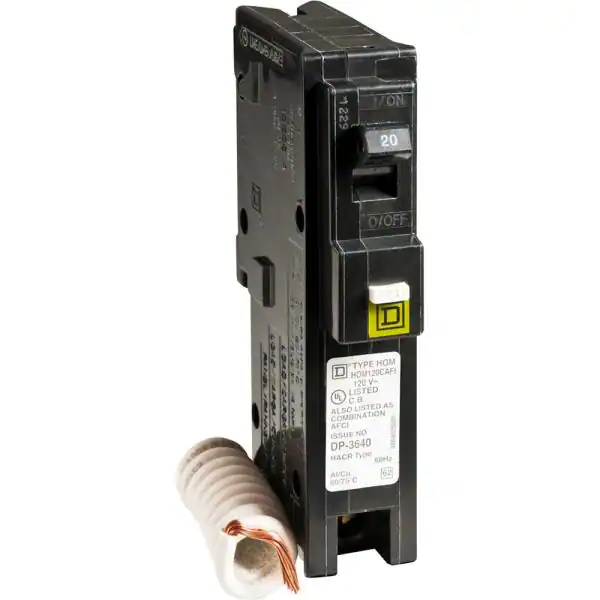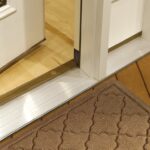Circuit breakers are necessary for a home’s electrical system to function correctly and keep you and your family safe. These fail-safes do many things, including preventing electrical fires and isolating electrical failures.
The two most common circuit breakers in the market are the Qo and Homeline. But what is the difference between Qo and Homeline breakers?
Qo breakers are rated for commercial usage, whereas Homeline breakers are solely approved for domestic use. Heavy appliances can be handled by Qo breakers, available in single, double, and triple-pole options. Although QO breakers cost $10 and include additional features like Visi-Trip Indicator, Homeline breakers are more affordable.
If you don’t need to manage heavy electrical loads, $5 Homeline breakers are the best choice. Although both Homeline and QO breakers are effective and trustworthy, it might be challenging to decide which one to use. This article will walk you through a quick comparison of the two breakers so that you can easily select the best one for you.
Table of Contents
Qo vs. Homeline: Overview

QO and Homeline breakers are Square D products, but deciding which one to use can be challenging. Yes, QO breakers cost more than Homeline breakers, but do the extra features justify the higher price? Let’s examine QO and Homeline breakers’ differences in cost, functionality, compatibility, and features.
Qo
The QO breaker, a product of Square D, is arguably more effective than the Homeline. The breakers are more diverse than Homeline breakers because they come in single, double, and triple-pole varieties. Also, they are highly compatible with CSED devices, QO load centers, and NQOD panel boards.
The key selling point of the QO breakers is that they are rated for 240 volts and can support large appliances. However, if you only require single-pole QO breakers for electrical outlets, you may locate them thanks to the many possibilities.
The Vis-Trip Indicator on QO breakers makes it possible to see when the breaker trips so that you may quickly reset it.
Additionally, QO breakers include a limited lifetime warranty, which is helpful if yours breaks. They are twice as expensive as Homeline breakers at $10, but the added expense is justified by the performance and safety features.
Homeline
The usage of Homeline breakers is dependable, inexpensive, and secure. They rank among the most cost-effective and practical circuit breakers available.
Homeline circuit breakers are available in single-pole and double-pole options. You can utilize this circuit breaker with Homeline load centers or Combination service entrance devices (CSED).
Due to their limited 120-volt rating, single-pole Homeline breakers may only be used in residential settings, although that is more than plenty for a house. However, with a Homeline single-pole circuit breaker, big appliances like washers and dryers cannot be used.
What is the Difference Between QO and Homeline Breakers?
Performance
The Homeline can only handle smaller electrical outputs because it is designed for residential use. Although the QO can manage that, it works better with more powerful appliances.
Compatibility
When it comes to compatibility, the QO wins. This breaker is compatible with CSED devices, QO load centers, and NQOD panel boards. On the other hand, Homeline is only compatible with CSED devices and QO load centers.
Due to their high compatibility, the Qo breakers can serve to meet any electrical function, either in a home or a business.
Breaker space
Homeline comes in a single-pole spacing option. In contrast, the QO is available with single-pole, double-pole, three-pole, and 3/4-inch breakers. The outstanding level of flexibility allows the Qo to meet the more specific needs compared to the Home line.
Trip Detection
It can take some investigation to find the tripped breaker on the Homeline. But with the Qo, which features the Visi-Trip indicator, it is possible to see which breakers have been tripped—resetting the breaker is now simpler than ever.
Price
The price difference is insignificant despite the difference in capacity and compatibility as well as the addition of the Visi-trip indication. The Homeline typically costs $4–5, and the Qo costs $9–10. The differences provided for the few more dollars are very remarkable.
Qo vs. Homeline: Which One Should You Go For?

If you are looking for a breaker for commercial usage, it would be best to go for the Qo breaker. This is because these breakers are designed for use with large appliances.
On the other hand, if you are looking for a pocket-friendly breaker that will be effective in your home, you should go for the Homeline. However, if the price of the breaker is not part of your concerns, you can try the Qo breaker.
Frequently Asked Questions
Do Square D Breakers Go Bad?
Square D circuit breakers will ultimately stop working. This is because circuit breakers lose effectiveness as they age, and you can experience issues like false trips or trouble resetting. If a Square D circuit breaker has a burning smell, a damaged box, or trips randomly without warning, it’s time to replace it.
Are Homeline and Qo Breakers Interchangeable?
No, because they fit unique panels with different bus bars and have equally distinctive qualities that make them stand out.
Can a Qo Breaker Fit in a Homeline Panel?
No, due to the different bus bar designs, you cannot slide QO breakers into a Homeline panel and vice versa.
How Do You Determine Which Square D Breakers You Require?
Always keep track of the precise electricity requirements for your property.
Additionally, be aware that many QO benefits, such as the Visi-Trip indicator, benefit everyone, independent of the application (home or commercial).
However, it’s preferable to settle for Homeline if you want to make even more financial savings and are confident that your house won’t require an extra-durable breaker.
In other words, take full advantage of each product line’s benefits.
What Kind of Breakers Work With Square D Homeline?
Your best bets are panels that have been declared interchangeable. These include products from GE, Eaton, Siemens, Cutler-Hammer, and others.
What are QOB Breakers?
In terms of Square D breaker kinds, you won’t run out of alternatives. The brand also produces bolt-on breakers known as QOB in addition to Homeline and QO breakers.
In particular, panels made for old-style Square D breakers like NQ and NQOB will function with QOB breakers.
Final Take
We hope this article helped you understand the differences between Qo and Homeline breakers. However, selecting the best one for your needs depends on your preference and taste.


